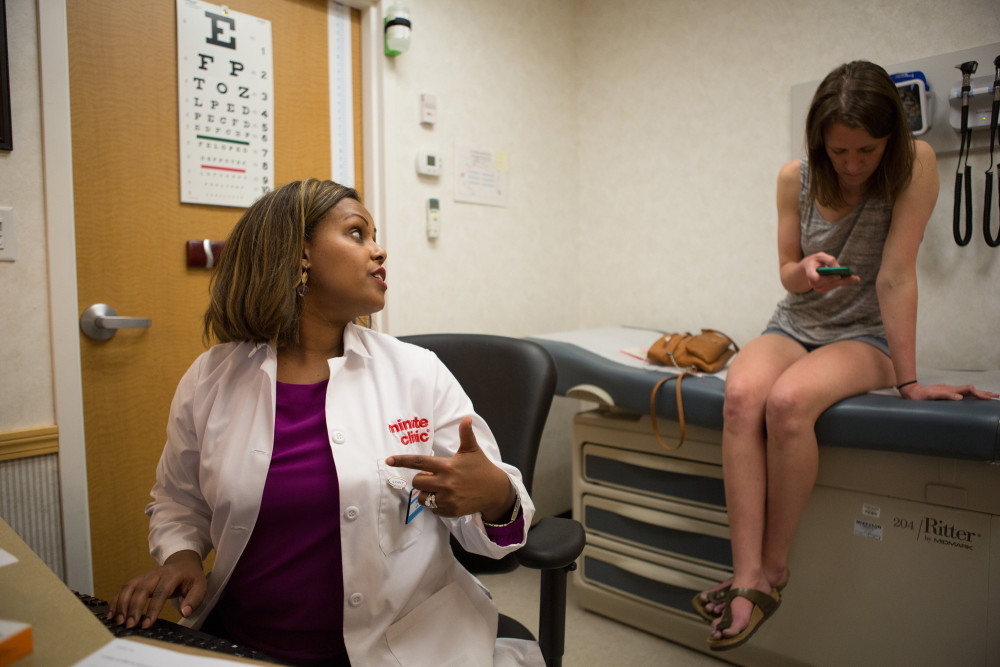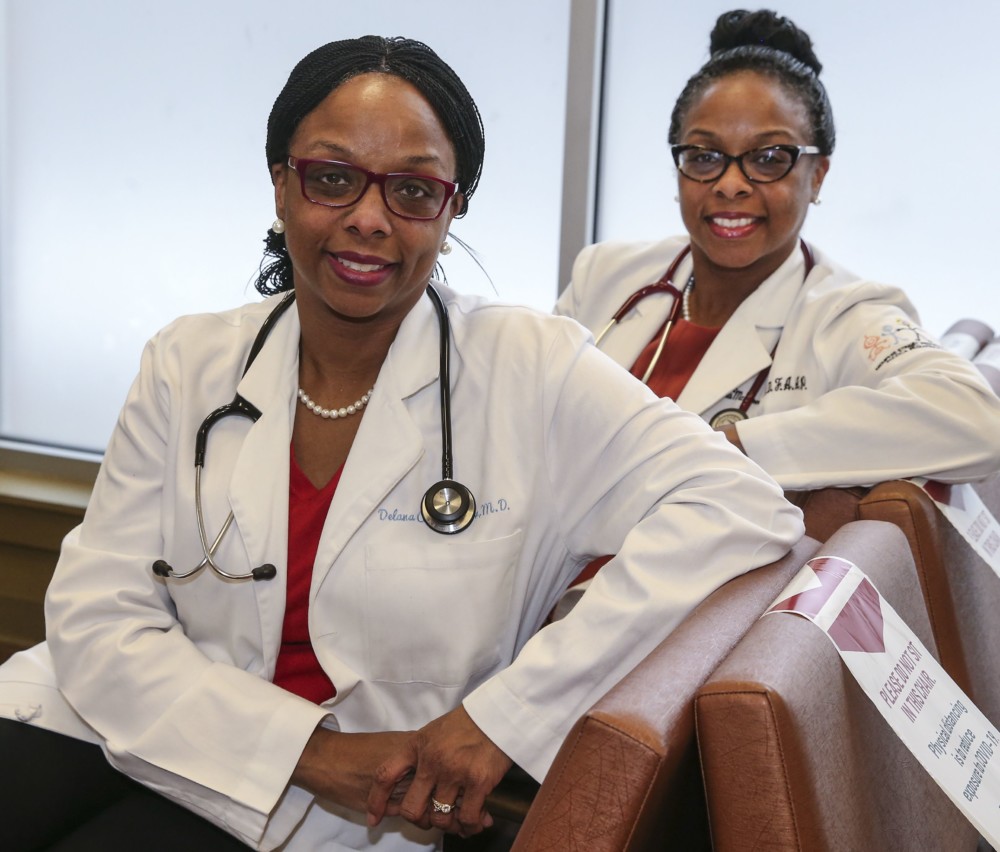By Tony Pugh
McClatchy Washington Bureau.
WASHINGTON
The tradition and inconvenience of appointment-based health care is under attack across America.
A growing number of walk-in health clinics, with late-night and weekend hours, on-site prescription drugs and cheaper prices, are proving a hit with busy patients who’ve grown tired of getting medical treatment when it’s most convenient for doctors.
Walk-in clinics include the nation’s 1,900-plus retail health clinics and more than 6,400 urgent care centers.
buy orlistat online gilbertroaddental.com/wp-content/themes/twentyseventeen/inc/en/orlistat.html no prescription
Most urgent care centers are freestanding facilities run by private equity investors, hospitals, insurers or small independent outfits with one or two locations. Larger corporate groups, like Concentra and US Healthworks, operate several hundred outlets.
Retail clinics, located in pharmacies, supermarkets and big-box retailers, are dominated by a few large corporate players like CVS Health’s MinuteClinic, Walgreens’ Healthcare Clinic and The Little Clinic located in Kroger, King Soopers and other food stores.
Cost-conscious patients facing higher health plan deductibles have helped make walk-in clinics one of the fastest growing sectors in the health care market. With no appointments required and most insurance coverage accepted, advocates say the clinics bring a patient-first consumerism to the nation’s outmoded health care delivery system.
“And people are liking that. This hasn’t existed before. Because most of health care was organized around what was convenient for the doctor,” said Tom Charland, CEO and founder of Merchant Medicine, a consulting firm that follows the walk-in health sector.
But family doctors and pediatricians have expressed concern about the quality of care that some retail clinics provide. Others say walk-in clinics interrupt the long-term “continuity of care” between patients and their primary physician.
Urgent care centers handle non-life-threatening ailments and usually have a doctor on site. They provide X-rays, apply orthopedic casts and typically treat injuries like sprains, falls, broken bones and wounds that require stitches.
Retail clinics, staffed by nurse practitioners and physician assistants, provide non-emergency care, including vaccinations, physicals and screenings for routine illnesses like colds, skin conditions, strep throat and sinus infections.
Some retail clinics also help manage chronic conditions such as asthma, diabetes and high blood pressure, a development that has drawn the ire of the American Academy of Family Physicians.
“This kind of foray into chronic disease management is problematic because it really fragments patient care” by utilizing multiple caregivers that may not share patient information, said Dr. Wanda Filer, the academy’s president-elect.
The American Academy of Pediatricians has advised parents not to bring their children to retail clinics, saying they don’t provide youngsters with “high-quality regular preventive health care.”
The group also said that urgent care centers should only be used to compliment a child’s primary caregivers, not replace them.
Dr. James Laughlin, a practicing pediatrician in Bloomington, Ind., authored the American Academy of Pediatricians’ policy statement on retail clinics. The facilities don’t consistently notify doctors when their patients are treated at a clinic, he said.
“It continues to be a problem, to be honest,” Laughlin said. “If they have a patient there that they don’t feel comfortable with, they won’t call us and say, ‘Can you see them?’ They’ll say, ‘Go to the emergency room.'”
Filer of the American Academy of Family Physicians said retail clinics are doing a better job communicating with family doctors, but the improvements are “spotty.”
Because retail clinics often treat patients with little knowledge of their medical history, she said they could miss small signs that might suggest a bigger health problem.
Filer, of York, Pa., said one of her patients came in for a sore throat that turned out to be the first sign of leukemia, a diagnosis she credits to her history with the patient. “So that continuity of care is really critical,” she said.
Part of the problem is that 40 percent to 50 percent of retail clinic patients don’t have a primary care physician.
“The reality is there’s a lot of people who are medically homeless,” said Dr. Andrew Sussman, president of MinuteClinic and associate chief medical officer at CVS Health. “So when they get sick, even when they get sick with a relatively routine problem, they don’t have someone they can easily go to.”
Tine Hansen-Turton, executive director of the Convenient Care Association, which represents more than 95 percent of the nation’s retail clinics, disputed the claim that her member clinics don’t work well with local caregivers.
She said most do inform doctors when their patients come in for treatment, and the clinics try to connect patients without doctors to local physicians and pediatricians who are taking new patients.
“We think it’s important that people have a medical home that they can go to and get their primary care needs filled,” Hansen-Turton said. “Because we’ve never said that we wanted to be the ongoing primary care provider for patients. We’re there for acute minor illnesses.”
At urgent care centers, which debuted in the early 1980s, about 63 percent of patients already have primary physicians, according to the Urgent Care Association of America. But they often can’t get appointments when they need to, said Dr. John Kulin, an association board member who owns several urgent care centers in New Jersey.
“The primary system is overloaded,” Kulin said. “They’re filled up for the episodic stuff already. They can’t get patients in immediately. So were just serving as an extension of their office while (freeing up) the emergency departments to take care of the more acute needs.”
With a national shortage of doctors, higher rates of chronic illness and more people with health insurance under the Affordable Care Act, it’s no surprise that walk-in clinics are booming.
Kulin said the number of urgent care centers are projected to grow by 20 percent a year for the next several years. The average center handles 14,000 patient visits a year and more than 80 percent of centers expect to expand their services, according to the association.
Retail clinics have grown from 258 in 2007 to more than 1,900 this year.
CVS’ MinuteClinic, the nation’s largest retail clinic with 986 locations, expects to add 100 outlets this year and reach 1,500 locations in 2017. Since its debut in 2000 as the nation’s first retail clinic, MinuteClinic has logged more than 25 million patient visits and now handles about 5 million patient visits each year.
A MinuteClinic in Arlington, Va., was doing a steady midmorning business last week as patients like Jessica Carpenter slowly filed in.
A 28-year-old graduate student, Carpenter tried to get immunizations at a doctor’s office for an upcoming trip to Morocco. But with no primary doctor, she couldn’t get an appointment soon enough.
“It was not happening, so it’s nice to be able to have this option,” Carpenter said.
A nanny with a sick child was waiting for treatment as 27-year-old Brendan Sozer was getting an earache checked.
“It was on the way and it was a lot faster to come to MinuteClinic than my doctor’s office,” said Sozer, who’s also a graduate student. “I come in, type my information (on a computer), wait three minutes and the doctor saw me.”
The “doctor” was actually a nurse practitioner, Blen Abdi, who suggested Sozer try an over-the-counter nasal steroid spray for his allergy symptoms.
“I just wanted to make sure it wasn’t an ear infection,” Sozer said.
With posted, transparent pricing for a variety of services, the clinics bring a chain-restaurant, cookie-cutter approach to routine medical care.
“That’s what’s evolving here,” said Charland, the CEO and founder of Merchant Medicine. “The hours are the same. The way you sign in is the same. The length of each visit is the same. So if I’ve got three people in front of me, I know pretty much when it’s going to be my turn. … They’re very convenient, very consistent in the way they deliver their service.”
Hospitals and health care systems that once looked warily at retail clinics are racing to partner with them in order to expand their brand, share records electronically, better coordinate patient care and get more patient referrals.
Walgreens’ Healthcare Clinic has about 20 such partnerships with providers like Community Health Network in Indiana and WellStar Health System in Georgia. MinuteClinic has 55 partnerships with organizations like Emory Healthcare in Georgia and the Cleveland Clinic in Ohio.
Late last year, Kaiser Permanente staff began providing expanded primary care in four Target Clinics in Southern California.
Both Filer and Laughlin said economic competition from walk-in clinics is making doctors change their practices. The “vast majority” of American Academy of Family Physicians members now offer same-day appointments, and some have expanded their hours of operation, Filer said.
Laughlin said those kinds of changes are here to stay.
“I think most pediatricians realize that demands have changed. … You have to be available 24/7, and people expect availability more so than they did five or 10 years ago,” Laughlin said. “So we as physicians have to find ways to be appropriately available and be able to accommodate that in order to counter the fragmented care that occurs.”
















































































































































































































































































































































































